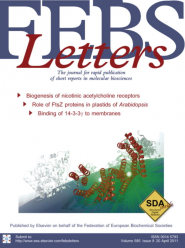Difference between revisions of "Main Page"
Jump to navigation
Jump to search
(fellowship) |
|||
| (7 intermediate revisions by 2 users not shown) | |||
| Line 28: | Line 28: | ||
{| class="jtable" style="float: left; width: 90%;" | {| class="jtable" style="float: left; width: 90%;" | ||
|+ style="font-size: 1.4em; font-weight: bold; text-align:left; border-bottom: 2px solid #6678b1;" | News & Updates | |+ style="font-size: 1.4em; font-weight: bold; text-align:left; border-bottom: 2px solid #6678b1;" | News & Updates | ||
| + | |- | ||
| + | ! Official Release | ||
| + | | [https://pymol.org PyMOL v2.4 has been released] on May 20, 2020. | ||
| + | |- | ||
| + | ! Python 3 | ||
| + | | New [[2to3|Python 3 compatibility guide]] for scripts and plugins | ||
|- | |- | ||
! POSF | ! POSF | ||
| − | | [https://pymol.org/fellowship PyMOL | + | | [https://pymol.org/fellowship New PyMOL fellows announced for 2018-2019] |
| + | |- | ||
| + | ! Tutorial | ||
| + | | [[Plugins Tutorial]] updated for PyQt5 | ||
|- | |- | ||
! New Plugin | ! New Plugin | ||
| − | | [[ | + | | [[PICv|PICv]] is a new plugin for clustering protein-protein interactions and visualization with available data from PDBe |
| − | |||
| − | |||
| − | |||
|- | |- | ||
! Selection keywords | ! Selection keywords | ||
| Line 46: | Line 52: | ||
! New Script | ! New Script | ||
| [[dssr_block]] is a wrapper for DSSR (3dna) and creates block-shaped nucleic acid cartoons | | [[dssr_block]] is a wrapper for DSSR (3dna) and creates block-shaped nucleic acid cartoons | ||
| − | |||
| − | |||
| − | |||
| − | |||
| − | |||
| − | |||
| − | |||
| − | |||
| − | |||
| − | |||
| − | |||
| − | |||
| − | |||
| − | |||
| − | |||
|- | |- | ||
! Older News | ! Older News | ||
Revision as of 05:05, 5 March 2021
| The community-run support site for the PyMOL molecular viewer. |
| To request a new account, email SBGrid at: accounts (@) sbgrid dot org |
| Tutorials | Table of Contents | Commands |
| Script Library | Plugins | FAQ |
| Gallery | Covers | PyMOL Cheat Sheet (PDF) | Getting Help |
|
|
 A Random PyMOL-generated Cover. See Covers.
|
